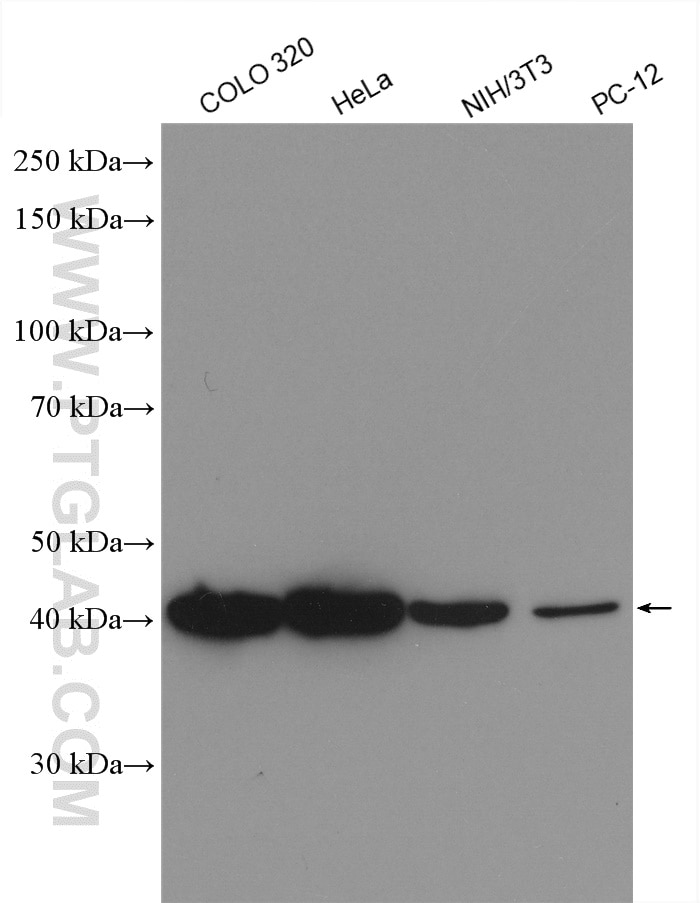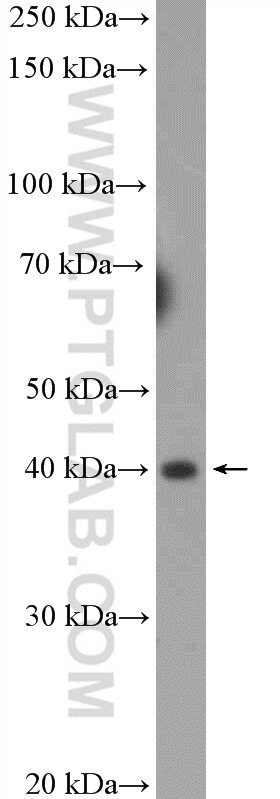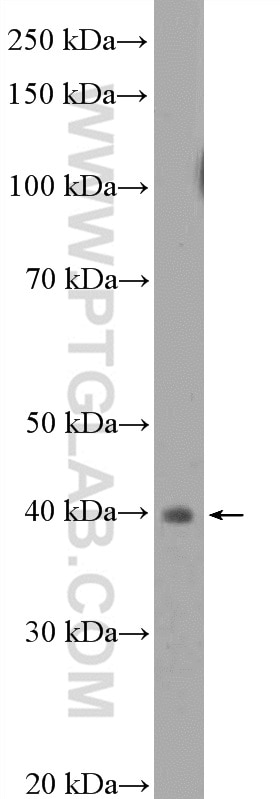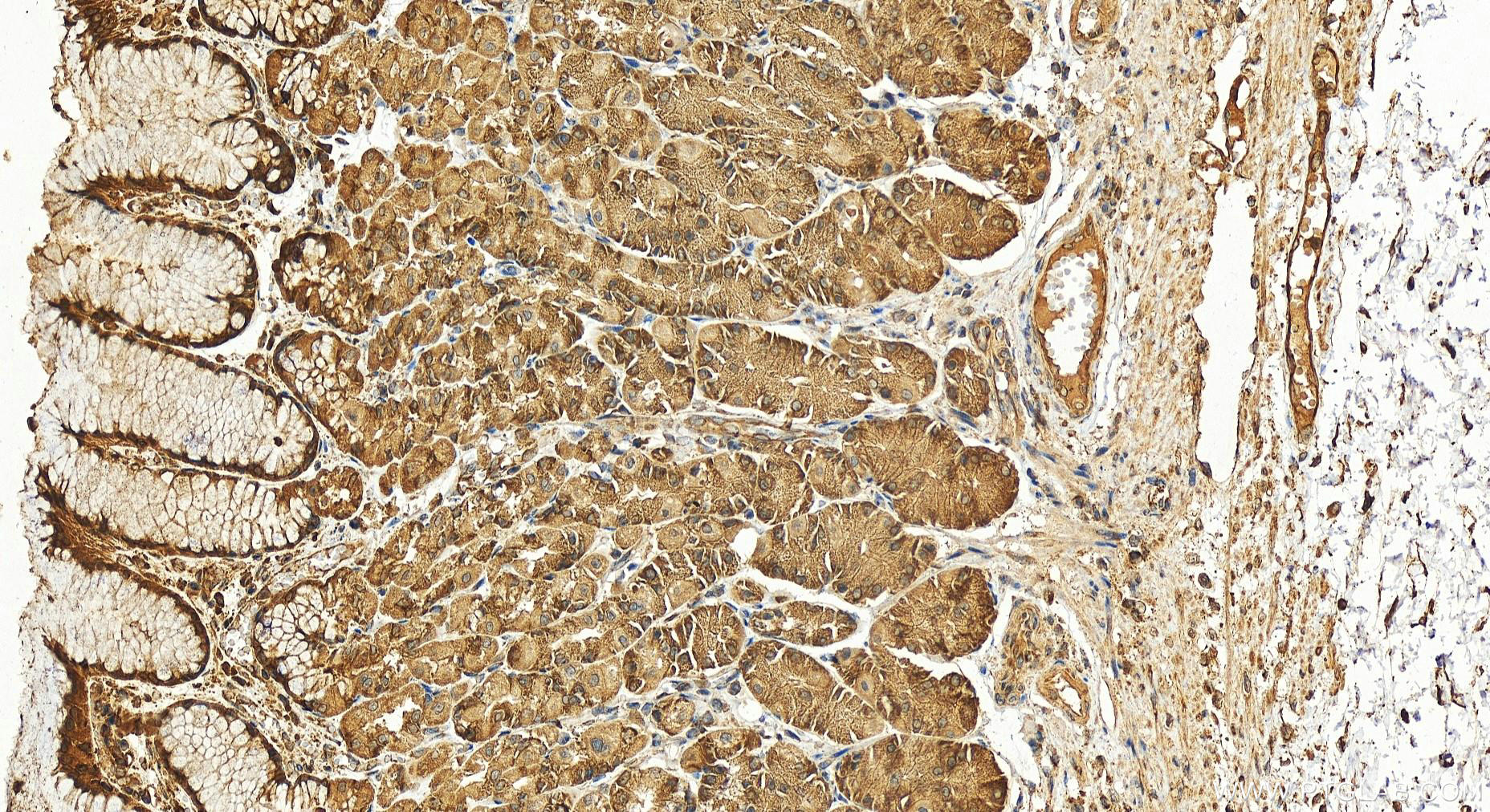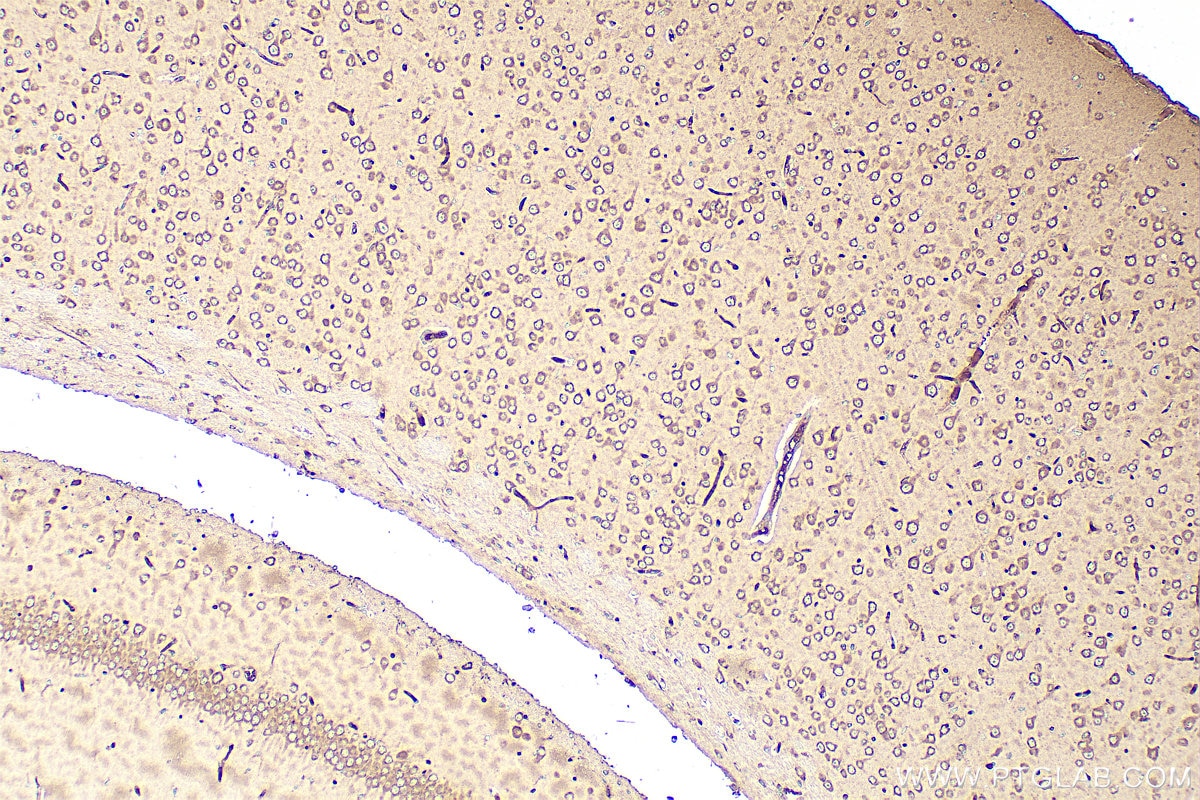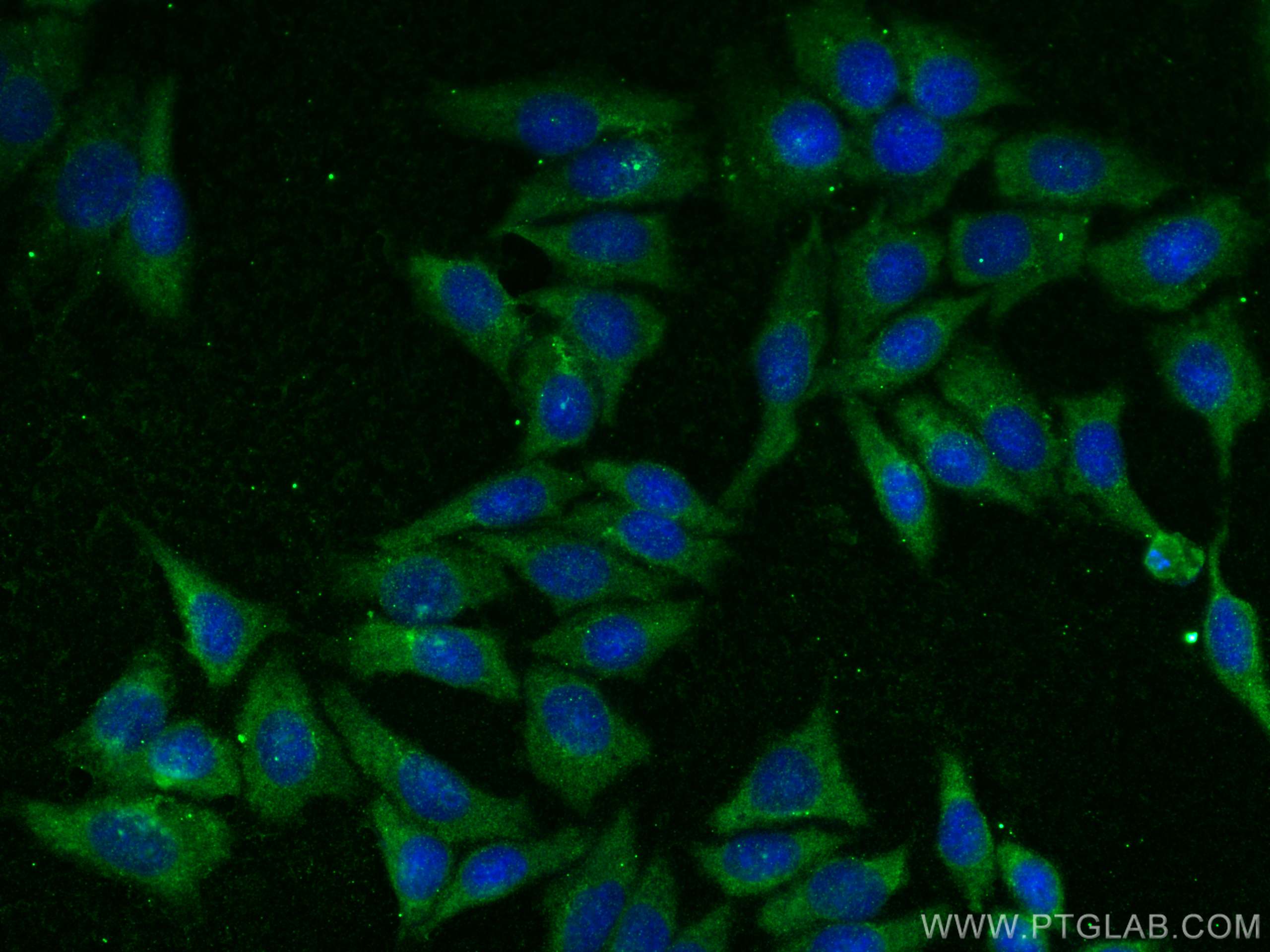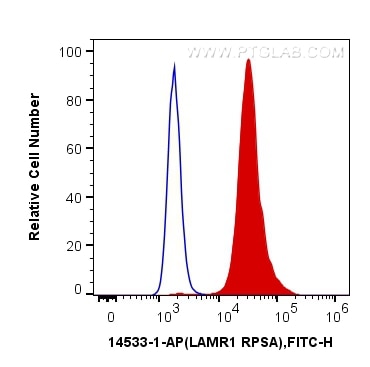- Phare
- Validé par KD/KO
Anticorps Polyclonal de lapin anti-LAMR1/RPSA
LAMR1/RPSA Polyclonal Antibody for WB, IHC, IF/ICC, FC (Intra), ELISA
Hôte / Isotype
Lapin / IgG
Réactivité testée
Humain, rat, souris et plus (1)
Applications
WB, IHC, IF/ICC, FC (Intra), ELISA
Conjugaison
Non conjugué
N° de cat : 14533-1-AP
Synonymes
Galerie de données de validation
Applications testées
| Résultats positifs en WB | cellules COLO 320, cellules HeLa, cellules NIH/3T3, cellules PC-12, tissu de côlon de souris, tissu hépatique de souris |
| Résultats positifs en IHC | tissu d'estomac humain, tissu cérébral de souris il est suggéré de démasquer l'antigène avec un tampon de TE buffer pH 9.0; (*) À défaut, 'le démasquage de l'antigène peut être 'effectué avec un tampon citrate pH 6,0. |
| Résultats positifs en IF/ICC | cellules HepG2, |
| Résultats positifs en FC (Intra) | cellules HeLa |
Dilution recommandée
| Application | Dilution |
|---|---|
| Western Blot (WB) | WB : 1:1000-1:4000 |
| Immunohistochimie (IHC) | IHC : 1:200-1:800 |
| Immunofluorescence (IF)/ICC | IF/ICC : 1:200-1:800 |
| Flow Cytometry (FC) (INTRA) | FC (INTRA) : 0.20 ug per 10^6 cells in a 100 µl suspension |
| It is recommended that this reagent should be titrated in each testing system to obtain optimal results. | |
| Sample-dependent, check data in validation data gallery | |
Applications publiées
| KD/KO | See 2 publications below |
| WB | See 13 publications below |
| IHC | See 2 publications below |
| IF | See 2 publications below |
Informations sur le produit
14533-1-AP cible LAMR1/RPSA dans les applications de WB, IHC, IF/ICC, FC (Intra), ELISA et montre une réactivité avec des échantillons Humain, rat, souris
| Réactivité | Humain, rat, souris |
| Réactivité citée | Humain, porc, souris |
| Hôte / Isotype | Lapin / IgG |
| Clonalité | Polyclonal |
| Type | Anticorps |
| Immunogène | LAMR1/RPSA Protéine recombinante Ag6033 |
| Nom complet | ribosomal protein SA |
| Masse moléculaire calculée | 33 kDa |
| Poids moléculaire observé | 40 kDa |
| Numéro d’acquisition GenBank | BC050688 |
| Symbole du gène | RPSA |
| Identification du gène (NCBI) | 3921 |
| Conjugaison | Non conjugué |
| Forme | Liquide |
| Méthode de purification | Purification par affinité contre l'antigène |
| Tampon de stockage | PBS with 0.02% sodium azide and 50% glycerol |
| Conditions de stockage | Stocker à -20°C. Stable pendant un an après l'expédition. L'aliquotage n'est pas nécessaire pour le stockage à -20oC Les 20ul contiennent 0,1% de BSA. |
Informations générales
The ribosomal protein SA (RPSA), previously named 67 kD laminin receptor(67LR), 37 kD laminin receptor precursor (37LRP) and p40 ribosome-associated protein, is a multifunctional protein, that plays a role in a number of pathological processes, such as cancer and prion diseases. It is overexpressed in various cancer cell lines, and the the level of the laminin receptor transcript is higher in colon carcinoma tissue and lung cancer cell line than their normal counterparts. This antibody is a rabbit polyclonal antibody raised against full length RPSA of human origin. This antibody is specific to RPSA (LAMR1).67LR derives from homo- or hetero- dimerization of a 37 kDa cytosolic precursor (37LRP)], most probably by fatty acid acylation. 37LRP is mostly found in the cytosol and nucleus [10] where it is involved in translational processes and maintenance of nuclear structures, respectively. 67LR is localized at the cell surface and it not only serves as a receptor for LM but also acts as a receptor for elastin, carbohydrates and the cellular prion protein.
Protocole
| Product Specific Protocols | |
|---|---|
| WB protocol for LAMR1/RPSA antibody 14533-1-AP | Download protocol |
| IHC protocol for LAMR1/RPSA antibody 14533-1-AP | Download protocol |
| IF protocol for LAMR1/RPSA antibody 14533-1-AP | Download protocol |
| Standard Protocols | |
|---|---|
| Click here to view our Standard Protocols |
Publications
| Species | Application | Title |
|---|---|---|
Arterioscler Thromb Vasc Biol β1-Integrin Is Essential for Vasoregulation and Smooth Muscle Survival In Vivo. | ||
Virulence LAMR1 restricts Zika virus infection by attenuating the envelope protein ubiquitination.
| ||
Hum Gene Ther Strategies to Attenuate Myocardial Infarction and No-Reflow through Preservation of Vascular Integrity by Pigment Epithelium-derived Factor. | ||
Sci Rep Epigallocatechin-3-gallate inhibits H2O2-induced apoptosis in Mouse Vascular Smooth Muscle Cells via 67kD Laminin Receptor. | ||
Food Funct Theaflavin-3,3'-di-gallate represses prostate cancer by activating the PKCδ/aSMase signaling pathway through a 67 kDa laminin receptor. |
